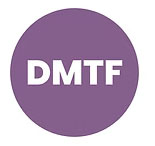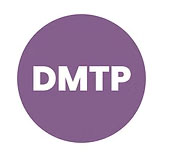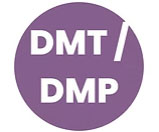Psst! Let's do a little digital/visual movement as you learn about Dance Movement Therapy.

The Indian Association of Dance Movement Therapy (IADMT) defines DMT as "a psychotherapeutic method that uses movement and creative expression to further socio-emotional, cognitive, and somatic integration. This approach is based on the principle that the body and mind are integrated." It helps in self-expression to bring about a change in the total functioning of an individual. DMT is for individuals of all ages, gender, races, and ethnic backgrounds in individual, couples, family, and group therapy formats.
As an individual’s movement is seen as a form of communication, Dance Movement Therapists utilise this art form to help individuals or the group find a way to express their emotions and their experiences which helps in their own internal processes.
Dance Movement Therapy also provides a holistic and creative approach to healing and wellness. It asserts that the body and mind are interconnected wherein, changes in the body reflect changes in the mind and vice versa. DMT is primarily a sensory and kinaesthetic experience and recognises that all movements are unique. It is based on the presumption that:
Psst! Let's do a little digital/visual movement as you learn about Dance Movement Therapy.

The Indian Association of Dance Movement Therapy aims to be inclusive, culturally competent, and indigenously relevant. While taking into consideration the diversity of training programs available in the country and the need for various types and levels of DMT work, we recognise the following categories of DMT-related professionals in India:

These are facilitators who have done certification programs taught by qualified DMTs or DMTPs. In order to continue being recognized as a DMTF, Continuous Professional Development (CPD) in the form of regular client work, self-work, supervision, attending workshops and conferences, etc. must be attended annually.

This role requires diploma-level training, taught by qualified DMTs. In order to continue being recognized as a DMTP, Continuous Professional Development (CPD) in the form of regular client work, self-work, supervision, attending workshops and conferences, etc. must be attended annually.

In order to become a DMT or DMP, a minimum qualification of a master’s level program is required. IADMT recognises that currently, there is no Indian master's program that meets these requirements. In order to continue being recognised as a DMT or DMP, the individual is expected to meet the CPD requirements in the form of regular client work, self-work, supervision, attending workshops and conferences, etc.
© Copyright 2025 IADMT.org All rights reserved. Terms of Service | Privacy Policy | Refund Policy